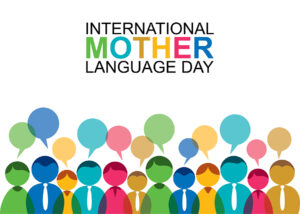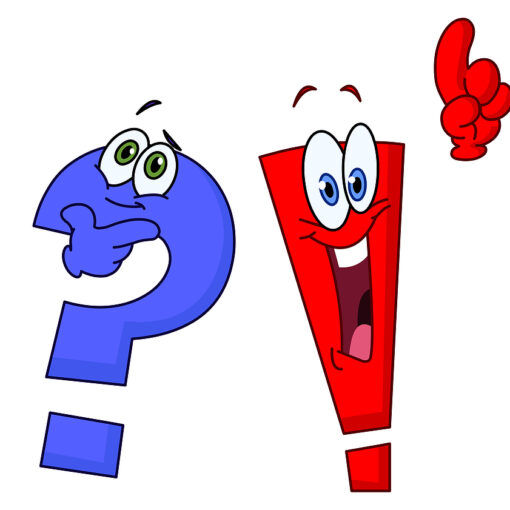
The United Nation’s celebration today fosters multilingualism for inclusion in education and society. International Mother Language Day recognizes that languages and multilingualism can advance inclusion, and their Sustainable Development Goals’ focus on leaving no one behind. UNESCO believes education, based on the first language or mother tongue, must begin from the early years as early childhood care and education is the foundation of learning.
The concept of language emerged between 10,000 and 35,000 years ago. Though the origin of the first language is fiercely debated, certain ancient scriptures and cave carvings reveal some of the oldest languages in the world.
The oldest living language in use today is Tamil. Spoken by 78 million people and the official language in Sri Lanka and Singapore, Tamil is the only ancient language to have survived all the way to the modern world. Part of the Dravidian family, which comprises some native southern and eastern Indian languages, Tamil is the most widely spoken language in the state of Tamil Nadu and is also one of the official languages of India. Inscriptions dating back to the 3rd century BCE have been found in Tamil.
Sanskrit is the world’s oldest language, spoken 5,000 years before Christ, but it fell out of common usage around 600 BCE. Sanskrit actually forms the base for many European languages and is still one of India’s official languages. Currently, it is a language of worship and ritual instead of speech.
Chinese is spoken by about 1.2 billion people in the world. Chinese belongs to the Sino-Tibetan group of languages. China has the longest continuous history of any country in the world; it was old at 3500 BCE. The language has many complex dialects; standardized Chinese is actually a language called mandarin,
Egyptian Coptic is the oldest indigenous language in Egypt, and Egypt is considered to be one of the oldest civilizations in the world. Written records date back to 3400 BCE, making it an ancient language. Coptic was the most widely spoken language in Egypt until the late 17th century CE when it was replaced by Egyptian Arabic in the post-Muslim invasion. Coptic is still used as the liturgical language at the Coptic Church in Egypt; only a few people now speak the language.
Greek is the official language of Greece and Cyprus and was first spoken in Greece and Asia Minor, which is now part of Turkey. Greek has an uninterrupted history of being used as a written language for over 3,000 years, longer than any other Indo-European language spoken today. This history is divided into three parts: Ancient Greek, Medieval Greek, and Modern Greek. Over 15 million people, mostly residing in Greece and Cyprus, speak Greek today.
Lithuanian forms a part of the group of the Indo-European languages that gave birth to various modern languages like German, Italian, and English. Lithuanian is closely related to Sanskrit, Latin, and Ancient Greek and has retained the sounds and grammar rules from the ancient era far better than its linguistic cousins. It is considered among one of the oldest languages in the world. Lithuanian today serves as the official language of the Republic of Lithuania and is also one of the official languages of the European Union. It is protected by special institutions and linguistic laws.
Arabic is spoken by about 260 million people. It has many dialects and is the origin of languages like Urdu and Malay. Arabic is the language of the Quaran and is therefore a sacred language. There is evidence of its existence 1,000 years before Christ.
Farsi is the common language spoken in modern day Iran, Afghanistan and Tajikistan. Farsi is the direct descendant of the Old Persian language, which was the official language of the Persian Empire (550 BCE). Modern Persian emerged around 800 CE, and it has changed little since that time. Speakers of the Persian language could read a piece of writing from 900 CE with less difficulty, for instance, than an English speaker could read English text from the time of Shakespeare.
The Armenian language is also part of the Indo-European linguistic group. It originated in 450 BCE and was spoken in Mesopotamia and the valleys of the caucus and in the southeastern region of the Black Sea. That region now falls in Armenia, Georgia, and Azerbaijan.
Hebrew lost common usage around 400 CE and is now preserved as a liturgical language for Jews across the world. With the rise of Zionism in the 19th and 20th centuries, Hebrew underwent a revival and became the official language of Israel. Though the Modern Hebrew differs from the Biblical version, native speakers of the language can completely comprehend what is written in ancient texts. Modern Hebrew is influenced by other Jewish languages in many ways.
Irish Gaelic, Gaelic, Erse or Irish, has over two million speakers around the world. Irish Gaelic has Celtic origins from the Bronze Age. However, the literary tradition can be traced back to the 6th century CE. The Irish language is related to Manx, Scottish Gaelic, Welsh, Cornish, and Breton languages. Oldest inscriptions of the language can be seen in Ogham stones of the 5th and 6th century CE.
Basque is spoken natively by a small population of people residing in Spain and France. However, it is completely unrelated to French and Spanish, or any other language in the world. Linguists have contemplated for centuries the roots of this mysterious language, but none of the theories remain intact. One thing that’s clear is that Basque existed in Europe before the arrival of Romance languages (around 900 CE) and has survived through the ages in tiny corners of the area.
Latin is the official language of the Vatican City. Like Sanskirt, it is a classical language. Latin comes in the romance branch of the Indo-European language family. From this, comes French, Italian, Spanish, Romanian, Portuguese , and the most popular language of the present time, English.
Icelandic, the national language of Iceland, is spoken by over 300, 000 people. Icelandic is also spoken in some part of Denmark, Canada and the USA. Icelandic is a North Germanic language and was developed from Norse, which was brought by the settlers of Norway about 870 — 930 CE. The written scripts of Icelandic are quite similar to Old Norse and can be traced back to the works of Ari the Learned (1068-1148).

The UN’s observance this year is a call on policymakers, educators and teachers, parents and families to scale up their commitment to multilingual education and inclusion in education to advance education recovery in the context of COVID-19. This effort also contributes to the United Nations International Decade of Indignous Languages (2022-2032).
(My apologies, but I copied and pasted pieces of this information so long ago that I lost the original sources)




